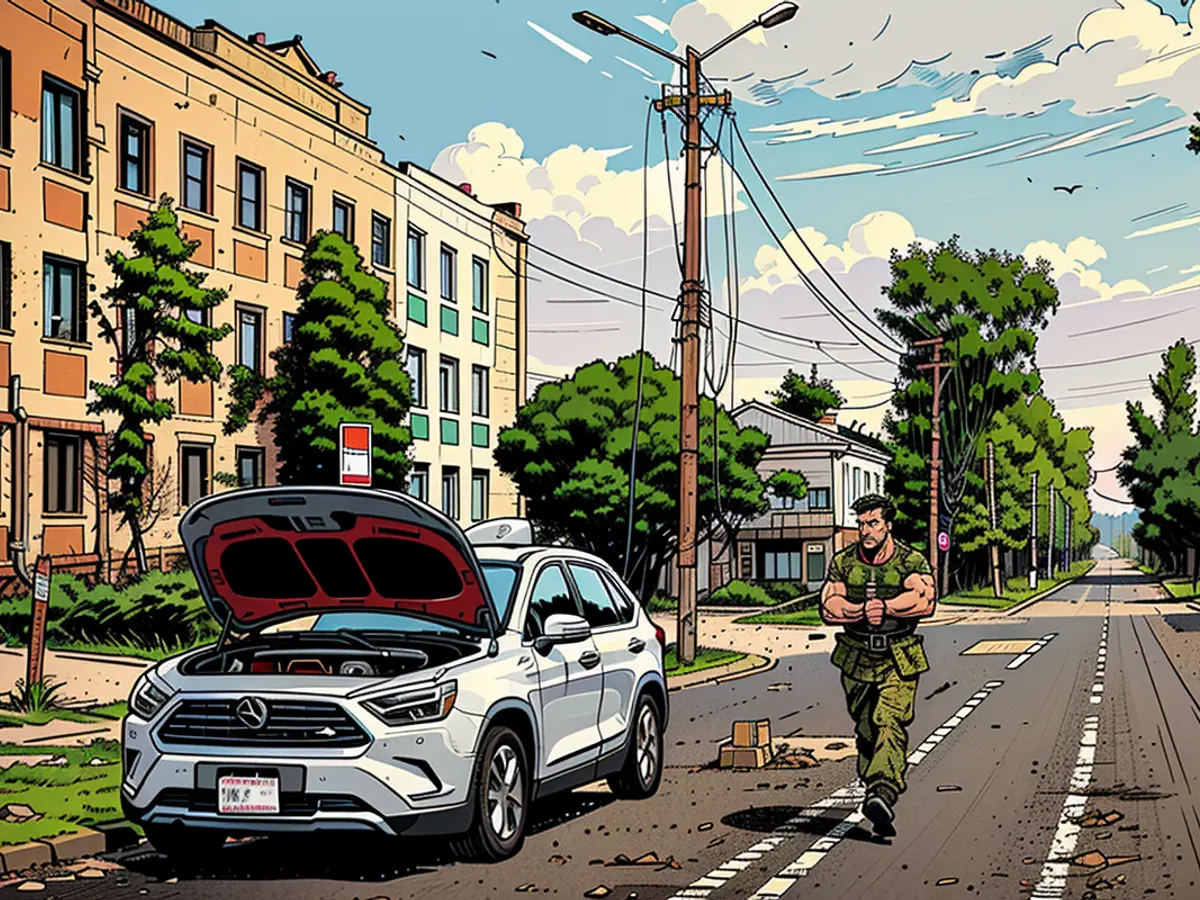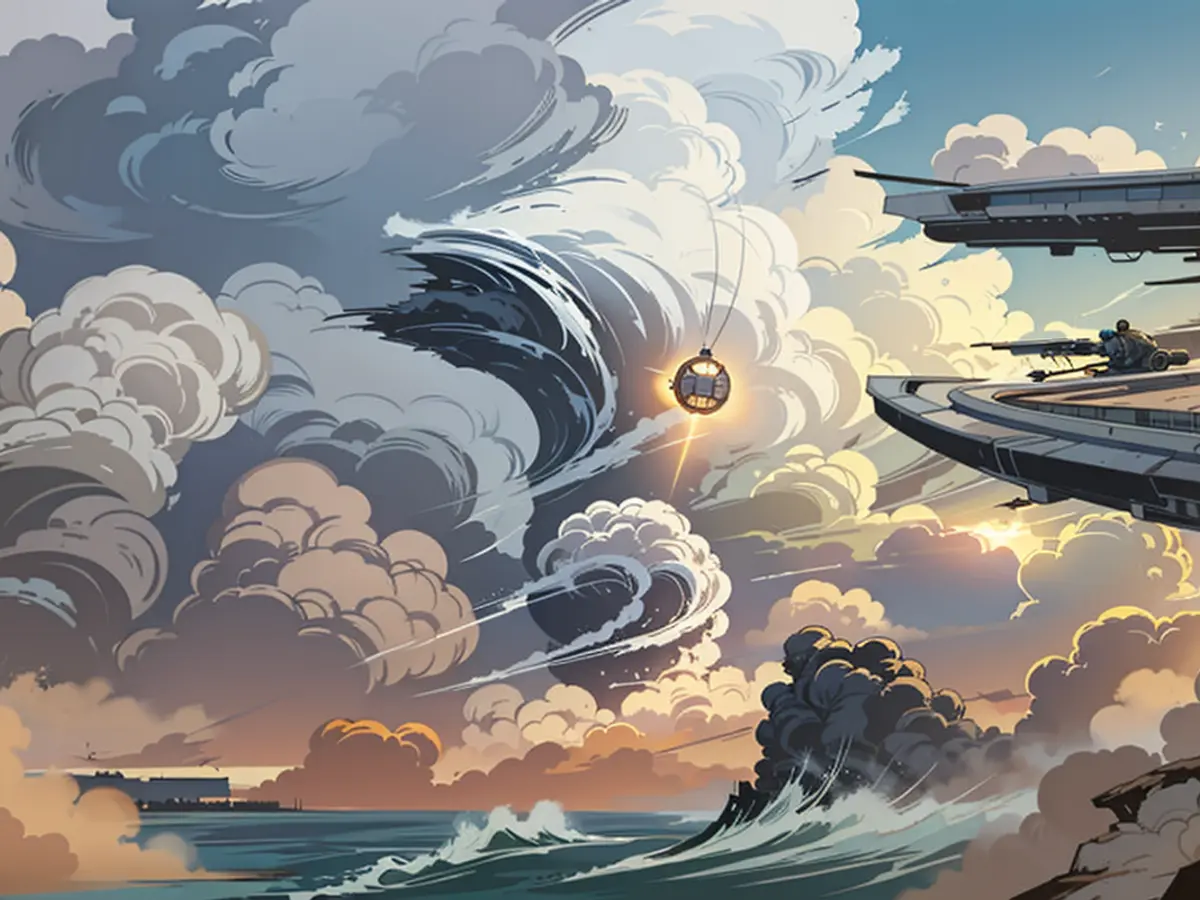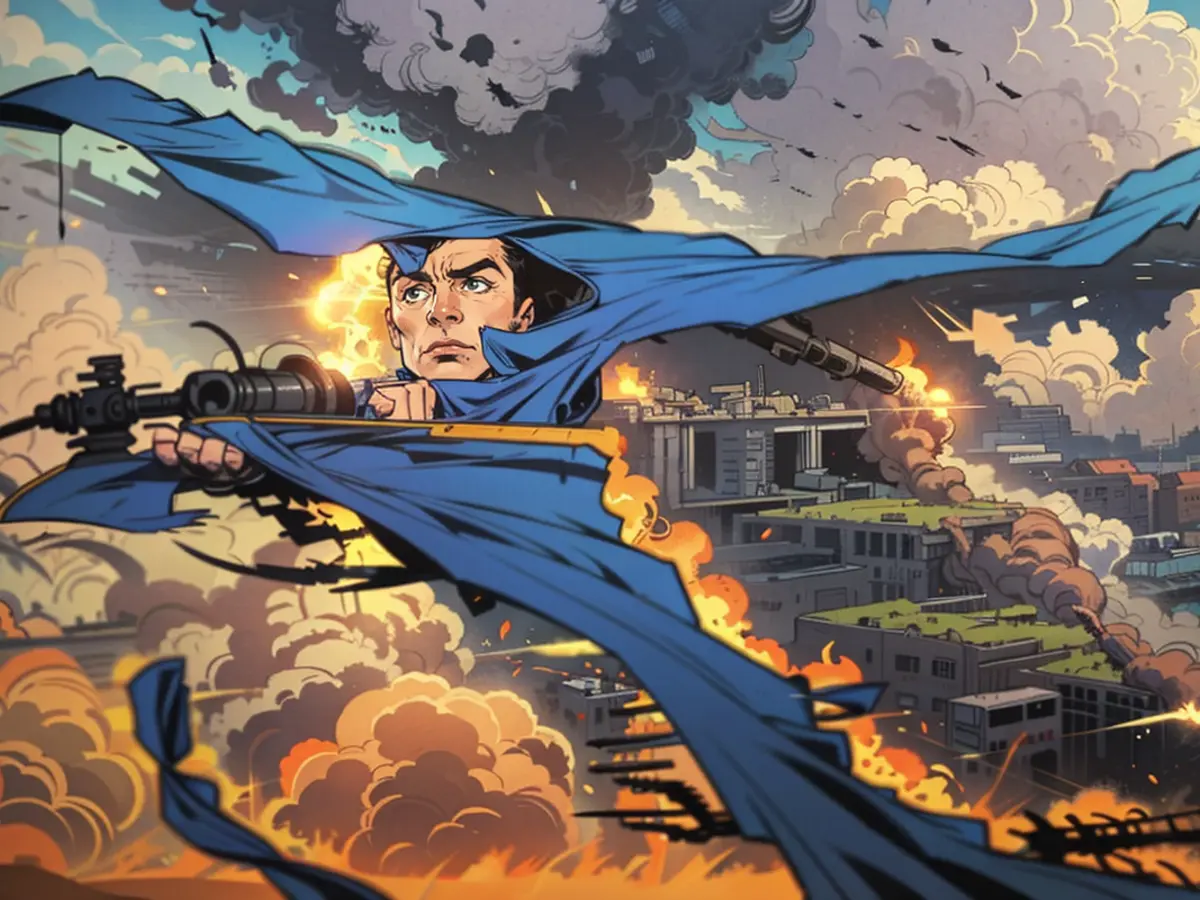Kyev's intrusion into Russia delivers a bold statement to its Western supporters: We are capable of triumphing in this conflict.
Similarly, the recent events have also sent a political statement to the allies of Kyiv that has shifted the general perspective of the war – it suggests that Ukrainian forces are not destined to engage in an endless defensive battle against the superior Russian firepower.
Ever since Moscow started its 2022 invasion, aiming to capture Kyiv within a week, it has repeated its claim that all objectives of what President Vladimir Putin refers to as the "special military operation" will be achieved. However, this statement now sounds hollow due to the Ukrainian forces' claim of capturing almost as much territory in Russia (around 1,200 square kilometers) this month as the Russians have managed to gain within Ukraine throughout the year.
Although Moscow has faced setbacks since the start of the invasion, its goals and methods have remained unchanged. Heavy bombardment combined with the expensive use of infantry has gradually chipped away at Ukrainian territory.
As per analysis by the Institute for the Study of War, a think-tank based in Washington, Putin may believe that as long as Russia maintains the initiative and prevents Ukraine from launching significant counteroffensive operations, it can inflict heavy losses on Ukraine over a long period, while outlasting Western aid to Ukraine and its efforts to mobilize more of its economy and population for the war effort.
Mathieu Boulegue, Senior Fellow at the Center for European Policy Analysis, concurs that while the large-scale strategy of both countries may remain unchanged, the recent developments have forced a new narrative on the Kremlin, marking the first signs of cracks in Putin's narrative.
Shifting the tide of the war
The Ukrainian military has challenged the growing belief among its supporters that it had little chance of recovering any of its own territory. The Ukrainian government views Kharkiv as a demonstration of its military's strength and necessitates continued, more rapid, and improved support from allies.
President Volodymyr Zelensky highlighted this point in a recent speech, stating, "We've already expanded and will continue to expand the circle of those who support a just end to this war. It's crucial that Ukraine enters this autumn even stronger than before."
Mick Ryan, a former general in Australia and author of the Futura Doctrina blog, acknowledged that Kharkiv has demonstrated Ukraine's ability to learn and adapt after the failure of its 2023 counteroffensive.
"Ukraine's aim here is to demonstrate that Russian victory is not inevitable and that it can fight and win," Ryan added, motivating skeptics to maintain their support and potentially loosen restrictions on the use of weapons.
The Ukrainians have consistently sought to overcome allies' reluctance in providing weapons that may escalate the conflict, starting with artillery and battle-tanks, later with F16 combat jets, and eventually long-range missiles such as HIMARS and ATACMs.
Until May, the use of US weapons to strike Russian soil was a red line for a Biden administration concerned about escalation. But Russia's incursion into the Kharkiv region, supported by long-range strikes from within Russian territory, prompted the relaxation of restrictions. The Ukrainians were effectively fighting with one hand tied behind their back, with Kharkiv in danger.
With the ban slightly eased, some US systems were allowed to target Russian territory. In Kursk, the Ukrainians have further eroded these restrictions by using armor within Russian territory. US, German, and UK-provided armored vehicles and tanks have been sighted moving through Russian countryside, while western missiles have destroyed bridges that could aid Russian defenders.
Zelensky asserted that Russia's bluff has been called. "The whole naive, illusory concept of Russia's red lines in relation to the war, which several of our partners believed, crumbled in these days near Sudzha," he said.
"Ukraine has proven again that the various red lines projected by the Russian president are nothing but an illusion intended to reinforce Western political caution about deciding on the war," Ryan commented.

Boulegue suggested that the Kursk operation serves as a valuable test for both Ukraine's allies to measure Putin's pain threshold and to test Russia's deterrence using a proxy.
"Russian red lines are fluid, and this is another incident of raising the temperature gradually," Boulegue concluded.
The Ukrainians have won an important political argument here: there have been no public objections from Western capitals regarding the opening of this new front, and even commendation from many NATO members, including Germany, the UK, and the United States.
"As they see attacks coming across the border, they have to be able to respond," Pentagon spokeswoman Sabrina Singh told reporters last month.
Josep Borrell, the EU's top diplomat, went further, stating on Wednesday that "lifting restrictions on the use of capabilities against the Russian military involved in aggression against Ukraine, in accordance with international law, would have several important effects: -Strengthen Ukrainian self-defense by ending Russia's sanctuary for its attacks and bombardments of Ukrainian cities and infrastructure. Save lives and reduce destruction in Ukraine. Help advance peace efforts."
However, there is a limit to the West's comfort. Ukraine would like to target airfields deep inside Russia with longer-range ATACM missiles, but Washington seems unwilling to agree.
Zelensky countered that "If our partners lifted all existing restrictions on using such weapons on Russian territory, then we wouldn't need physically to enter the Kursk region with the aim of protecting our Ukrainian citizens in border regions and destroying the Russian aggression potential."
Taking over Russian land strengthens Ukraine's negotiating stance in any discussions, and serves as a safety net if ex-U.S. President Donald Trump were to secure another election victory and push for a truce pact with Ukraine.
The effectiveness of the Kursk invasion wasn't solely due to Western equipment. Ukrainian intelligence gathering, strategic planning, and special forces contributed significantly, along with numerous Ukrainian-manufactured drones, artillery, countermeasures for electronic warfare, and even thermobaric explosives.
As highlighted by Olga Tatariuk of Chatham House, this demonstrates Ukraine's autonomy, challenging Russia's portrayal of the conflict as a proxy war between the West. Additionally, it syncs well with international allies' expectations that Ukraine is transitioning from a defensive stance after the 2023 counteroffensive's initial optimism faded.
As described by a Ukrainian soldier involved in the Kursk operation, it was meticulously planned, with impressive support from both flanks. "This operation was exceptionally well-coordinated. I have no clue who came up with the strategy, but it was executed flawlessly. We were in the center with support on either side. Excellent operation," he shared.
With Russian forces encroaching on two significant hubs in eastern Donetsk – Pokrovsk and Toretsk – the Kursk invasion represents a high-risk maneuver for Ukraine. However, Ukrainian forces serve as a reminder that the conflict is not a one-sided affair.
According to analyst Boulegue, the outcome of this operation remains uncertain. If Ukrainian forces manage to hold their ground against advancing Russian artillery and aviation support, the Kursk invasion will eventually become recognized as more than just a footnote.
For every additional day Ukrainian forces retain control over a territory larger than Hong Kong, the significance of the Kursk invasion continues to grow.

The recent successes of Ukrainian forces in regaining territory, such as in the Kharkiv region and the Kursk operation, have garnered international attention and support, showing that Europe and the world are paying close attention to the developments in Ukraine.
Governments and organizations in Europe and beyond have responded to Ukrainian requests for military aid, easing restrictions on the use of weapons and allowing for attacks on Russian territory. This shift in policy highlights the international community's desire to support Ukraine and deter further Russian aggression.







